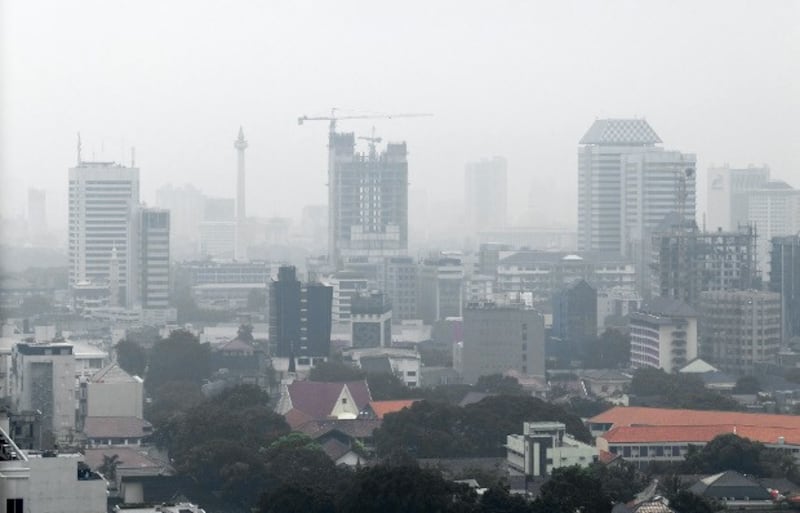Air pollution may slash the life expectancy of residents in Bangladesh and many Southeast Asian nations, says a report by the Energy Policy Institute at the University of Chicago (EPIC).
Without strong policies to reduce fossil fuels and bring global air pollution levels down, billions of life-years will be lost, said the annual report on Air Quality Life Index (ALQI), which correlates air pollution levels and life expectancy.
“Working unseen inside the human body, the deadly effects of PM 2.5 on the heart, lungs and other systems have a more devastating impact on life expectancy than communicable diseases like tuberculosis, behavioral killers like cigarette smoking and even war,” the report said, referring to particulate matter.
According to the World Health Orgazanition’s outdoor air pollution guideline, annual average exposure of PM 2.5 – the concentration of microscopic particulate matter that could get deep into the bloodstream and lungs, causing deadly diseases – should not exceed 10 µg/m3 (micrograms per cubic meter).
Bangladesh had the world's worst annual average PM 2.5 concentration per capita, with 77.1 µg/m3, in 2020, according to a report published this year by IQAir, a Swiss group that measures air quality levels.
People in the South Asian country would live 5.4 years longer if pollution levels met WHO guideline. Residents of its capital Dhaka could live 7.7 years longer, EPIC’s report said.
Bangladesh, along with India, Nepal and Pakistan, has consistently ranked among the top five most polluted countries in the world, the report said.
A huge rise in motor vehicles and brick kilns are among the main reasons for air pollution in Bangladesh.
Between 2013 and 2020, the number of motor vehicles roughly tripled, the ALQI report said, quoting the Bangladesh Transport Authority.
Md. Humayun Kabir, an environment and geography professor at Dhaka University, said poorly maintained roads and unfit, old vehicles increased air pollution from particulate matter.
In addition, there was not enough oversight to ensure that large development projects don’t pollute, said Habibun Nahar, Bangladesh’s deputy minister of environment, forest and climate change.
“This is the harsh reality. Mega projects are polluting the environment. We do not have enough manpower to monitor all development sites and factories,” Nahar told BenarNews.
In Dhaka, brick kilns are responsible for about 60 percent of the particulate pollution, according to the ALQI report.
“There are nearly a 1,000 brickfields in the surroundings of Dhaka. They are producing excessive carbon, sulfur dioxide, and other toxic gases,” Kabir said.
The government is planning to phase out the use of bricks in favor of concrete blocks by 2025 to reduce the damage to both the quality of the air and topsoil.

Indonesia's coal-fired power plants
Meanwhile, in Southeast Asian cities such as Bangkok, Ho Chi Minh City and Jakarta, the average resident “stands to gain two to five years of life expectancy,” if pollution levels were reined in to meet the WHO guideline, the report said.
In Thailand, the residents of Bangkok would gain 1.5 years if pollution levels met the WHO guideline, the report said. Forest fires in the country’s northern region have increased the amount of regional air pollution, reducing life expectancy by two years.
In Jakarta, particulate pollution will likely slash 5.5 years in the life expectancy of the 11 million residents of Indonesia’s capital if the WHO guideline is not met, the report said.
Coal is one of the main culprits in Indonesia. The fossil fuel accounts for 56 percent of electricity generation in the country.
Indonesia’s coal-fired power plants – there are around 10 within a 62-mile radius of Jakarta – are allowed to emit three to 7.5 times more particulate matter and toxic gases such as nitrogen oxide and sulfur dioxide than China’s coal plants, the report said.
In the Indonesian cities of Palangkaraya, the capital and largest city of Central Kalimantan, and Palembang, the capital of South Sumatra, average particulate pollution over the past decade is about three times the WHO guideline, the report said.
This is largely due to forest and wetland fires – which cause haze – that are often set illegally to clear land for agricultural plantations.
The residents in these cities could see two years of their lives cut if the WHO guideline is not met, the report said.
Often, the haze spreads to other parts of Southeast Asia. In 2015 Malaysia was forced to close 7,000 schools as well as businesses and government offices because of wildfire smoke from Indonesia.
The report said the world urgently needs strong policies to reduce its dependence on fossil fuels, since “air pollution is not only a global challenge, but is also intertwined with climate change.”
“Both challenges are primarily caused by the same culprit: fossil fuel emissions from power plants, vehicles and other industrial sources,” the report said.
“Without strong policies to reduce fossil fuels and bring global air pollution levels down to meet the WHO guideline, billions of life-years will be lost.”
Jesmin Papri in Dhaka contributed to this report.
